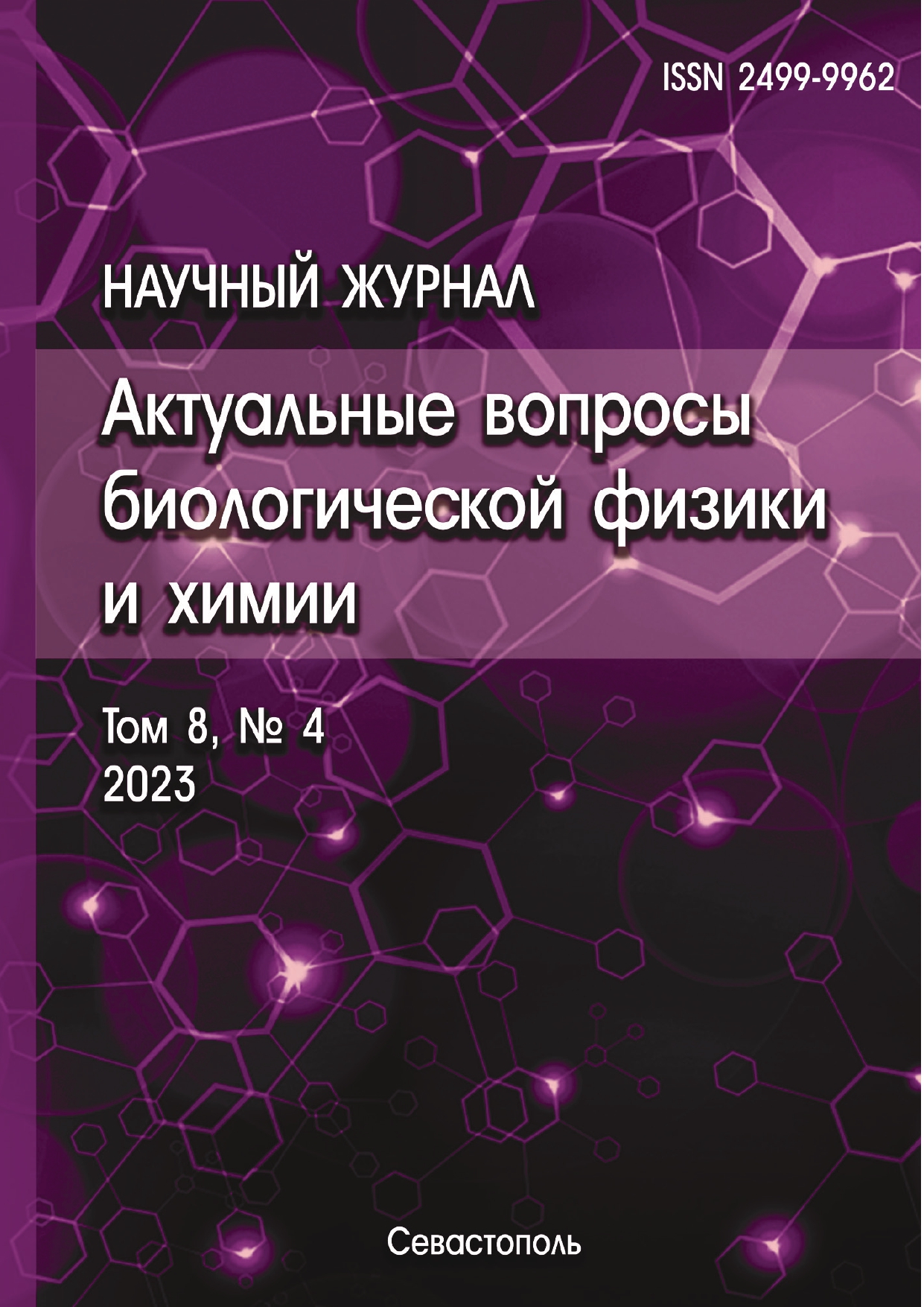Севастополь, Севастополь, Россия
Севастополь, Севастополь, Россия
Севастополь, Севастополь, Россия
Севастополь, Севастополь, Россия
В настоящей работе при помощи методов проточной цитометрии и лазерной дифракции проведен анализ функционального состояния гемоцитов (осмотическая хрупкость, соотношение типов клеток в гемолимфе, способность к продукции активных форм кислорода – АФК) средиземноморской мидии Mytilus galloprovincialis (Lamarck, 1819), акклиматизированных к низкой (6 ‰, 10 ‰, 14 ‰) и высокой солености (24 ‰, 30 ‰). Акклимация к различной солености приводила к разнонаправленному изменению клеточного состава гемолимфы мидий, наиболее выраженный эффект наблюдался при низкой солености. При этом, как в условиях низкой, так и высокой солености отмечен рост внутриклеточной концентрации АФК в гемоцитах, что может свидетельствовать о развитии окислительного стресса. Кроме этого, при всех изменениях солености был зафиксирован сдвиг кривой осмотической хрупкости. Результаты настоящей работы показали, что средиземноморская мидия обладает выраженной толерантностью к кратковременным (48 ч) колебаниям солености, при этом снижение солености сопровождалось более выраженными функциональными изменениями. В свою очередь сдвиг кривой осмотической стойкости свидетельствует об участии клеточных механизмов осморегуляции у средиземноморских мидий при адаптации к краткосрочному изменению солености.
гемоциты, клеточный состав гемолимфы, активные формы кислорода, соленость, осмотическая хрупкость
1. Hoegh-Guldberg O., Jacob D. et al. Impacts of 1.5 C global warming on natural and human systems. Global warming of 1.5° C, 2018.
2. Zonn I.S. Environmental issues of the Caspian. The Caspian sea environment, 2005, pp. 223-242.
3. Zaitsev Y. Introduction to the Black Sea Ecology, 2008.
4. Barbier E.B., Hacker S.D., Kennedy C., Koch E.W., Stier A.C., Silliman B.R. The value of estuarine and coastal ecosystem services. Ecological monographs, 2011, vol. 81, no. 2, pp. 169-193.
5. Chen K., Kuang C., Wang L., Chen K., Han X., Fan J. Storm surge prediction based on long short-term memory neural network in the East China Sea. Applied Sciences, 2021, vol. 12, no. 1, p. 181.
6. Coughlan M., Cronin P., Ryan F. Survey research: Process and limitations. International Journal of Therapy and Rehabilitation, 2009, vol. 16, no. 1, pp. 9-15.
7. Velez C., Figueira E., Soares A.M., Freitas R. Native and introduced clams biochemical responses to salinity and pH changes. Science of the Total Environment, 2016, vol. 566, pp. 260-268.
8. Velez C., Figueira E., Soares A.M., Freitas R. Combined effects of seawater acidification and salinity changes in Ruditapes philippinarum. Aquatic Toxicology, 2016, vol. 176, pp. 141-150.
9. Wijsman J.W. M., Troost K., Fang J., Roncarati A. Global production of marine bivalves. Trends and challenges. Goods and services of marine bivalves, 2019, pp. 7-26.
10. Ahmed N., Thompson S., Glaser M. Global aquaculture productivity, environmental sustainability, and climate change adaptability. Environmental management, 2019, vol. 63, pp. 159-172. DOI: https://doi.org/10.1007/s00267-018-1117-3; EDN: https://elibrary.ru/RFYUPF
11. Andreyeva A.Yu., Gostyukhina O.L., Kladchenko E.S., Vodiasova E.A., Chelebieva E.S. Acute hypoxic exposure: effect on hemocyte functional parameters and antioxidant potential in gills of the pacific oyster, Crassostrea gigas. Marine Environmental Research, 2021, vol. 169, p. 105389.
12. Mindukshev I.V., Krivoshlyk V.V., Dobrylko I.A., Goncharov N.V., Vivulanets E.V., Kuznetsov S.V., Krivchenko A.I. Abnormalities of elastic and transporting properties of red blood cells under development of apoptosis. Biochemistry (Moscow) Supplement Series A: Membrane and Cell Biology, 2010, vol. 4, pp. 22-31. DOI: https://doi.org/10.1134/S1990747810010046; EDN: https://elibrary.ru/MXEWTT
13. Gambaryan S., Subramanian H., Kehrer L., Mindukshev I., Sudnitsyna J., Reiss C., Rukoyatkina N., Friebe A., Sharina I., Martin E., Walter U. Erythrocytes do not activate purified and platelet soluble guanylate cyclases even in conditions favourable for NO synthesis. Cell Communication and Signaling, 2016, vol. 14, pp. 1-12. DOI: https://doi.org/10.1186/s12964-016-0139-9; EDN: https://elibrary.ru/XFOSCH
14. Sudnitsyna J.S., Skvertchinskaya E.A., Dobrylko I.A., Nikitina E.R., Krivchenko A.I., Gambaryan S.P., Mindukshev I.V. Human erythrocyte ammonium transport is mediated by functional interaction of ammonium (RhAG) and anion (AE1) transporters. Biochemistry (Moscow) Supplement Series A: Membrane and Cell Biology, 2016, vol. 10, pp. 301-310. DOI: https://doi.org/10.1134/S1990747816040097; EDN: https://elibrary.ru/YUXFYX
15. Singh T.S., Verma T.N. An assessment study of using Turel Kongreng (river mussels) as a source of heterogeneous catalyst for biofuel production. Biocatalysis and Agricultural Biotechnology, 2019, vol. 20, p. 101185.
16. Makhro A., Huisjes R., Verhagen L. P. et al. Red cell properties after different modes of blood transportation. Frontiers in physiology, 2016, vol. 7, p. 288.
17. Carregosa V., Velez C., Soares A.M., Figueira E., Freitas R. Physiological and biochemical responses of three Veneridae clams exposed to salinity changes. Comparative Biochemistry and Physiology Part B: Biochemistry and Molecular Biology, 2014, vol. 177, pp. 1-9.
18. Huang H.-Y., Lin Y.-C.-D., Li J. et al. miRTarBase 2020: updates to the experimentally validated microRNA–target interaction database. Nucleic acids research, 2020, vol. 48, no. D1, pp. D148-D154.
19. Suski M.Sc.J.M., Lebiedzinska M., Bonora M., Pinton P., Duszynski J., Wieckowski M.R. Relation between mitochondrial membrane potential and ROS formation. Mitochondrial bioenergetics: Methods and protocols, 2018, pp. 357-381.
20. Mohanty J.G., Nagababu E., Rifkind J.M. Red blood cell oxidative stress impairs oxygen delivery and induces red blood cell aging. Frontiers in physiology, 2014, vol. 5, p. 84.










